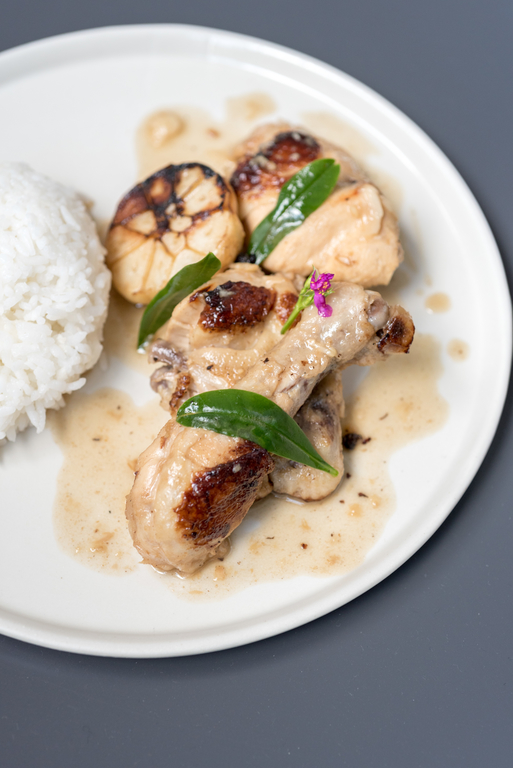Let’s get one thing straight. The original adobo was not brown.
Before Adobo became the Philippines’ national viand, it first belonged to the French. The name adobo actually came from the French word “adouber,” which meant to “to dress a knight in armor.” As knights went out of fashion, it eventually grew to mean “to arrange, to construct, to tan leather, and to dress foods.”
Later on, Spaniards took the French word and adapted it into “adobar,” pertaining to the pickled sauce they use for their meat.

When Ferdinand Magellan sailed around the world to get killed by Lapu-Lapu in 1521, he paved the way for Franciscan missionary and dictionary-writer Pedro de San Buenaventura to make his way to the Philippines in 1594. Besides the native Filipino language, Buenaventura also marveled at the way the natives cooked their meals and wrote a book listing all the methods that he could find. In this book, he coined the term “adobo de los naturales” to name the general method that natives pickled their meat.
Since the main purpose of preparing the adobo at the time of its discovery by the Spaniards, it’s more likely that the pre-colonization form of this infamous Filipino dish is the not-so-popular, colorless one.
In the book “Kulinarya: A Guidebook to Philippine Cuisine” by Margarita Fores et al, they also make the argument that white adobo is actually the classic version “because it highlights the trio of basic adobo flavors: vinegar, garlic, and peppercorns, and eliminates soy sauce which tends to drown out the other flavors.”
In the original version of adobo, soy sauce is replaced by salt for flavor.
So there you have it. Much as it would seem that the white adobo is the whitewashed version, it actually isn’t. Now, let’s all enjoy a good helping of this delicious dish.
Read more:
WATCH: Ditch the soy sauce and try this version of white adobo
Berde Bowl’s Pinoy salad bowls are making us hungry for local greens
A seasonal kitchen in Makati reacquaints us with the goddess Persephone
Writer: ANTHEA REYES
PHOTOGRAPHY PATRICK SEGOVIA




